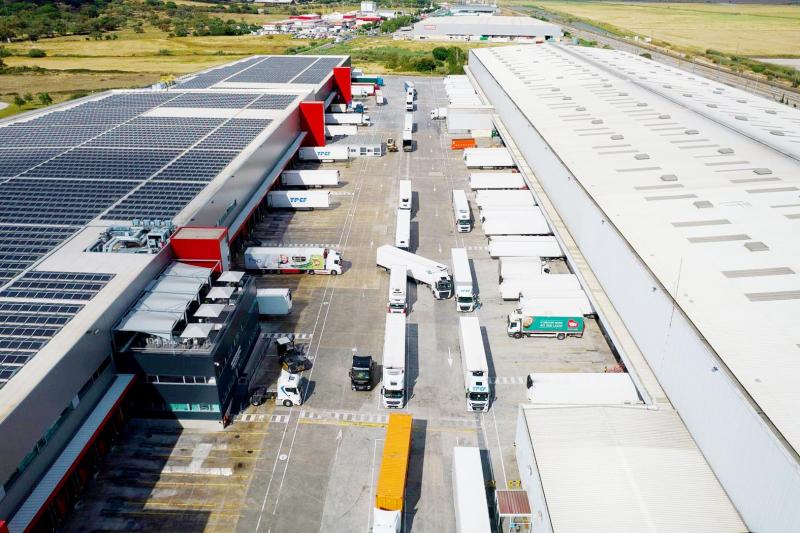The rise of e-commerce and the logistical nightmare created by the COVID-19 pandemic have caused a surge in demand for warehouse space in the US, and big investment funds have taken note.
“It’s been a tremendous struggle to find the appropriate location for clients,” said Michael Schipper of Blau & Berg Co, a commercial real-estate specialist in New Jersey and New York.
Available space has been dwindling steadily for 18 months, and the vacancy rate is now 3.4 percent, although developers delivered 90 million square feet of new warehouse space in the first three months of the year, real-estate firm Jones Lang LaSalle Inc said.

Photo: Bloomberg
Demand is so strong that purchase prices have tripled or quadrupled in just six years in northern New Jersey. Across the US, average rental costs have jumped 22 percent in two years, analytics firm Beroe Inc said.
Additionally, unlike traditional storage sites, fulfilling online orders requires technologically advanced warehouses, said Mark Manduca, chief investment officer at GXO Logistics Inc, a supply chain management company.
Beroe said this equipment, which requires massive investments, allows firms “to improve warehouse efficiency and to speed up warehouse activities to meet the same-day delivery demands.”
Pioneered by Amazon.com Inc, other retailers were obliged to scramble to catch up to a new standard of immediate delivery set by the Seattle-based online sales giant.
Many of those companies have been rapidly ramping up their own e-commerce efforts, Manduca said.
“Those are the people that are really driving that demand for last mile warehousing,” he said.
The demands of instant delivery have forced many sellers to acquire multiple storage locations to get closer to customers, especially in urban areas where real estate was already expensive.
The COVID-19 pandemic accelerated that trend, as e-commerce sales surged by 56 percent between early 2020 and early this year.
Another pandemic effect was the logistical mess caused by COVID-19 lockdowns and health restrictions. That revealed storage capacity “in the wrong place, supply chain issues, and more recently, inventory rebuilds that have kind of almost overshot to a certain degree,” Manduca said.
To address those issues, many companies are “now looking at facilities closer to home, which is naturally increasing the demand for warehousing,” he said.
Amid the rise in demand, private equity firm Blackstone Group Inc has invested heavily in the sector, and currently owns US$170 billion worth of warehouses. It now rivals Prologis Inc, a global leader in logistics real estate.
Other private equity giants — such as Carlyle Group Inc, Apollo Global Management Inc or Sweden’s EQT Partners AB — have all bought sites to ride the wave.
However, Schipper said that while the warehousing industry “has a long term positive trajectory,” he thinks “there needs to be a pause.”
“You cannot run up in parabolic fashion forever,” he said, noting that the current tightening of credit conditions also could dampen conditions.
One sign of a possible correction is coming: Amazon’s decision to renegotiate rent for 30 million square feet of warehouse space.
“You’re going to see demand for space go down, and rental rates will stop going up at the pace that they’re going up. There’s just not any way around it,” EQT Exeter Property Group CEO Ward Fitzgerald said. “There’s going to be a correction.”
Comments will be moderated. Keep comments relevant to the article. Remarks containing abusive and obscene language, personal attacks of any kind or promotion will be removed and the user banned. Final decision will be at the discretion of the Taipei Times.

